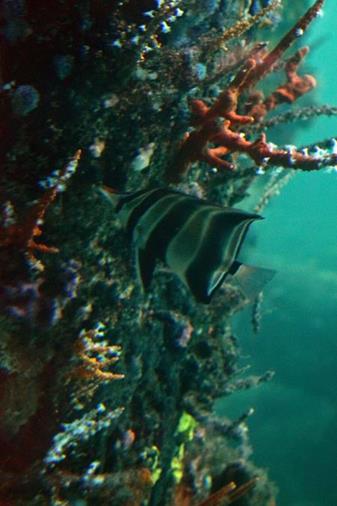|
The long wooden jetty that has become such an icon at Busselton, has undergone a number of changes in its long life and has, on a number
of occasions come very close to being lost forever.
It has survived storms, vandalism, fires, government indifference and even a cyclone that demolished a large section of the structure.
The greatest supporters and ultimately the saviours of the jetty have been the ordinary people of Busselton who have fought long and hard
for the restoration and continued maintenance of the jetty.
I have been to Busselton more times than I can remember but it wasn't until 2021 that I finally went out to the end of the jetty to take
a tour of the underwater observatory but that is discussed a little later. First let's have a look back at the history of this
remarkable jetty.
At 1841 metres long, the Busselton Jetty is still the longest timber piled jetty in the southern hemisphere.
The need for a jetty at Busselton dates back to the early years of the timber and agricultural industries and is due to the shallow
nature of Geographe Bay.
The water is a mere 8 metres deep at the end of the jetty and most of the bay is unsuited to large cargo ships. The jetty was
constructed to allow ships to load produce for the export trade.
The first jetty was completed in 1865 but it was a mere 161 metres long. By 1875 this had increased to 292 metres and many more
additions were made up to the 1960s.
As ships grew in size it became more and more difficult to load cargo. The last commercial ship tied up to the jetty in 1971
and the following year the jetty was closed to commercial shipping.
Maintenance of the jetty ceased and it looked as though the government would decide to demolish the whole structure.
In 1976 a 'save our jetty' group was formed and began raising money for restoration but progress was very slow.
When cyclone Alby struck in 1978, much of the first 700 metres of the jetty was destroyed. it looked as though the fate of the
old jetty was sealed. The old promenade section of the jetty was condemned and removed and what had been a Y shaped structure
became the bent shape that we see today.
In 1989 a fee was charged to enter the jetty and the money was put into a fund to help preserve the structure. To begin with
fees were collected at a small caravan located near the entrance to the jetty.
250 metres of the jetty had been replaced by 1990 after a $500,000 grant from the state government and by using a further $160,000
in raised funds.
The first tourist train began operating in 1995 and this boosted fund raising efforts as it attracted many more tourists.
After raising $2 million dollars there was a setback when a fire destroyed 65 metres of the jetty in 1999. The repair bill of $900,000
chewed up a large portion of the money that had been raised.
Just 2 years later the interpretive centre was opened and efforts to raise money intensified.
In 6 months some $220,000 was raised, dwarfing all fund raising efforts to that date.
In the first year of operation of the centre, 200,000 people came to the jetty.
On the 13th of December 2003 the underwater observatory was opened at a cost of $3.6 million dollars. The hollow structure had
been fabricated at the shipyards south of Fremantle and was floated south to Busselton. It was then sunk, attached to the sea floor
and pumped dry.


More storm damage occurred in 2004 but when the jetty was included on the State Register of Heritage Places, its future became
more assured.
27.1 million dollars, that included a government grant of $24 million, was spent on the restoration.
Work on the jetty meant that for a time, the underwater observatory was only accessible by boat.
On February 6th 2011 the jetty was reopened to the public and a new tourist train began taking passengers out to the end of the
jetty. The previous train had stopped running in 2005.
In the days when the jetty was still being used to load ships, some rather large engines shunted goods out to waiting ships.
Sadly there seem to be no pictures of the first tourist train but the second was similar in many ways to the current model.
The latest train began operating in 2017 and is solar powered. Panels are located on top of each carriage and 5 lithium batteries
give enough power to move 90 passengers along the 1.7 kilometre track.
The train, the first of its kind in Australia cost $400,000 to construct and was made in Western Australia.
The jetty still faces many challenges, from wild weather to stupid, irresponsible people.
In 2015 some sub-moronic muppets lit a fire near the end of the jetty after trespassing in a restricted area. Thankfully, on
that occasion the fire did not take hold and spread.
An average of 400,000 visitors come to the jetty each year and the money they contribute for train rides and entry to the
underwater observatory goes a long way to ensuring the future of this amazing local icon.
Best time to visit:
|
Jan
|
Feb
|
Mar
|
Apr
|
May
|
Jun
|
Jul
|
Aug
|
Sep
|
Oct
|
Nov
|
Dec
|
NPW Website for more information
|






